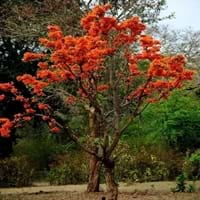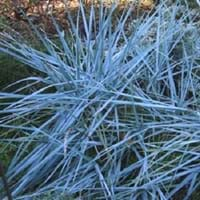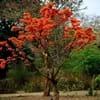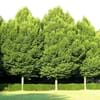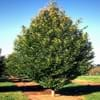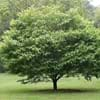Life Span
Perennial
Perennial
Origin
Southern Asia, India
Europe, Western Asia
Types
Not Available
Blue Dune Lyme Grass
Habitat
Subtropical climates, Tropical Climate
Clay soil areas, Loamy soils, Sandy areas, sandy seeps, Well Drained
USDA Hardiness Zone
10-13
7-9
Sunset Zone
H1, H2, 23, 24
Not Available
Habit
Upright/Erect
Spreading
Flower Color
Orange, Black
Creamy Yellow
Flower Color Modifier
Bicolor
Bicolor
Fruit Color
Bronze, Sandy Brown
Not Available
Leaf Color in Spring
Green
Blue Green, Gray Green
Leaf Color in Summer
Dark Green
Light Green
Leaf Color in Fall
Dark Green
Blue Green, Gray Green
Leaf Color in Winter
Not Available
Tan
Leaf Shape
Pinnate
Grass like
Plant Season
Spring, Winter
Summer, Fall, Winter
Sunlight
Full Sun, Partial Sun
Full Sun, Partial Sun, Partial shade
Type of Soil
Loam, Sand
Clay, Loam, Sand
The pH of Soil
Acidic, Neutral
Acidic, Neutral, Alkaline
Soil Drainage
Well drained
Well drained
Bloom Time
Early Spring, Late Winter
Early Summer, Summer
Tolerances
Drought
Wet Site, Pollution, Drought, Soil Compaction
Where to Plant?
Ground
Container, Ground, Pot
How to Plant?
Seedlings
Root Division, Rooted stem cutting, Seedlings
Plant Maintenance
Medium
Medium
Watering Requirements
Average Water Needs
Average Water Needs, occasional watering once established
In Summer
Lots of watering
Lots of watering
In Spring
Moderate
Moderate
In Winter
Average Water
Average Water
Soil pH
Acidic, Neutral
Acidic, Neutral, Alkaline
Soil Type
Loam, Sand
Clay, Loam, Sand
Soil Drainage Capacity
Well drained
Well drained
Sun Exposure
Full Sun, Partial Sun
Full Sun, Partial Sun, Partial shade
Pruning
Remove damaged leaves, Remove dead branches, Remove dead leaves
No pruning needed in the early stages, Prune grass to maintain level
Fertilizers
All-Purpose Liquid Fertilizer
All-Purpose Liquid Fertilizer, fertilize in spring
Pests and Diseases
Rats
Red blotch
Plant Tolerance
Drought
Drought, Pollution, Soil Compaction, Wet Site
Flowers
Showy
Insignificant
Flower Petal Number
Single
Single
Foliage Texture
Medium
Coarse
Foliage Sheen
Matte
Matte
Attracts
Birds, Hummingbirds
Butterflies
Allergy
Anaemia, Kidney Disease
Pollen
Aesthetic Uses
Not Used For Aesthetic Purpose
Ground Cover, Landscape Designing
Beauty Benefits
Not Available
Not Available
Edible Uses
Yes
Insignificant
Environmental Uses
Air purification
Air purification, soil erosion prevension on hill slopes, soil stabilisation
Medicinal Uses
Analgesic, anti-inflammatory, antimicrobial, Astringent, Diuretic
Not Available
Part of Plant Used
Flowers, Gum, Leaves
Stem
Other Uses
Used as a dyeing color for fabric, used for making charcoal, Used to make leather, Used to prepare a traditional Holi colour
Used as Ornamental plant
Used As Indoor Plant
No
No
Used As Outdoor Plant
Yes
Yes
Garden Design
Feature Plant, Shade Trees, Tropical
Dried Flower/Everlasting, Groundcover
Botanical Name
BUTEA monosperma
ELYMUS glaucus
Common Name
Flame-of-the-forest, Parrot Tree
Blue Lyme Grass, Blue Wildrye
In Hindi
पलाश
Blue Lyme Grass
In German
Flamme -of -the- Wald
Blau Lyme Grass
In French
Flame -of-the -forest
Bleu Lyme Herbe
In Spanish
Llama - de - la - bosque
Azul hierba de Lyme
In Greek
Φλόγα - of-the - δάσος
Μπλε Lyme Grass
In Portuguese
Chama -of-the -forest
Azul Lyme grama
In Polish
Płomień -of -the- las
Niebieska Trawa Lyme
In Latin
Flamma -of - Silva
Blue Lyme Grass
Phylum
Magnoliophyta
Magnoliophyta
Class
Magnoliopsida
Liliopsida
Clade
Angiosperms, Eudicots, Rosids
Angiosperms, Commelinids, Monocots
Tribe
Phaseoleae
Triticeae
Subfamily
Faboideae
Pooideae
Number of Species
Not Available
Not Available
Properties of Flame-of-the-forest and Blue Lyme Grass
Wondering what are the properties of Flame-of-the-forest and Blue Lyme Grass? We provide you with everything About Flame-of-the-forest and Blue Lyme Grass. Flame-of-the-forest doesn't have thorns and Blue Lyme Grass doesn't have thorns. Also Flame-of-the-forest does not have fragrant flowers. Flame-of-the-forest has allergic reactions like Anaemia and Kidney Disease and Blue Lyme Grass has allergic reactions like Anaemia and Kidney Disease. Compare all the properties and characteristics of these two plants. Find out which of these plant can be used as indoor plant. If you are interested to decorate your house and garden, find out aesthetic uses, compare them and select the plant which will beautify your surrounding. Along with beautification, try comparing medicinal and edible uses of Flame-of-the-forest and Blue Lyme Grass and you can choose the plant having best and most benefits.
Season and Care of Flame-of-the-forest and Blue Lyme Grass
Season and care of Flame-of-the-forest and Blue Lyme Grass is important to know. While considering everything about Flame-of-the-forest and Blue Lyme Grass Care, growing season is an essential factor. Flame-of-the-forest season is Spring and Winter and Blue Lyme Grass season is Spring and Winter. The type of soil for Flame-of-the-forest is Loam, Sand and for Blue Lyme Grass is Clay, Loam, Sand while the PH of soil for Flame-of-the-forest is Acidic, Neutral and for Blue Lyme Grass is Acidic, Neutral, Alkaline.
Flame-of-the-forest and Blue Lyme Grass Physical Information
Flame-of-the-forest and Blue Lyme Grass physical information is very important for comparison. Flame-of-the-forest height is 910.00 cm and width 1,070.00 cm whereas Blue Lyme Grass height is 150.00 cm and width 75.00 cm. The color specification of Flame-of-the-forest and Blue Lyme Grass are as follows:
Flame-of-the-forest flower color: Orange and Black
Flame-of-the-forest leaf color: Green
Blue Lyme Grass flower color: Creamy Yellow
- Blue Lyme Grass leaf color: Blue Green and Gray Green
Care of Flame-of-the-forest and Blue Lyme Grass
Care of Flame-of-the-forest and Blue Lyme Grass include pruning, fertilizers, watering etc. Flame-of-the-forest pruning is done Remove damaged leaves, Remove dead branches and Remove dead leaves and Blue Lyme Grass pruning is done No pruning needed in the early stages and Prune grass to maintain level. In summer Flame-of-the-forest needs Lots of watering and in winter, it needs Average Water. Whereas, in summer Blue Lyme Grass needs Lots of watering and in winter, it needs Average Water.
